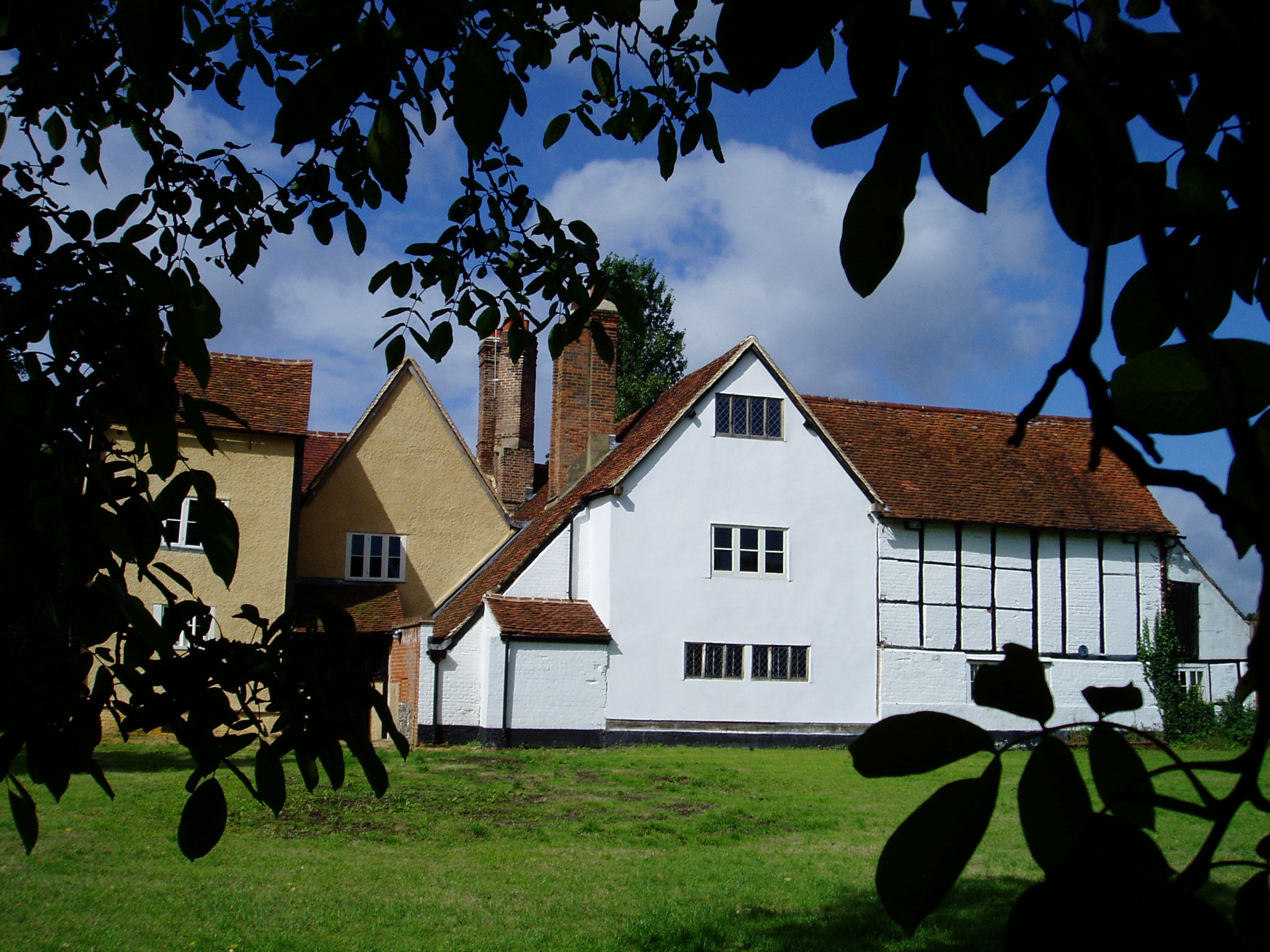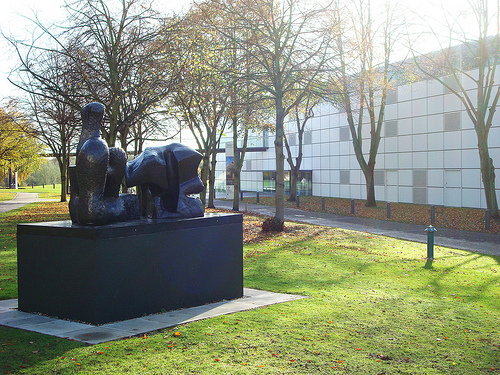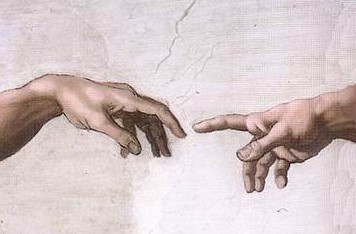|
Mary Cozens-Walker
Mary Cozens-Walker (married name Mary Green, 11 August 1938 – 4 July 2020) was an English textile artist and painter best known for her three-dimensional works pertaining to her own domestic life. She exhibited in the United Kingdom, Japan, and the United States. She has appeared as a model in about 600 paintings. Her own work is in national collections and paintings of her are also in national collections. Personal life Mary Cozens-Walker was born on 11 August 1938 in Harrow, Middlesex. She was educated at North London Collegiate School, London (where she was taught by Peggy Angus) and the Slade School of Art (where her contemporaries included Mario Dubsky, Dorothy Mead and Dennis Creffield and future RAs Ben Levene, Patrick Procktor and Anthony Green). Her tutors at the Slade included William Coldstream, Cecil Beaton, Lucian Freud, L.S. Lowry and David Bomberg. In 1961 she married Anthony Green, and they had two daughters, Kate and Lucy. In 1967 she traveled t ... [...More Info...] [...Related Items...] OR: [Wikipedia] [Google] [Baidu] |
Harrow, London
Harrow () is a large town in Greater London, England, and serves as the principal settlement of the London Borough of Harrow. Lying about north-west of Charing Cross and south of Watford, the entire town including its localities had a population of 149,246 at the 2011 census, whereas the wider borough (which also contains Pinner and Stanmore) had a population of 250,149. The historic centre of Harrow was atop the Harrow Hill. The modern town of Harrow grew out at the foot of the settlement, in what was historically called Greenhill. With the arrival of the Metropolitan Railway in the 19th century, the centre of Harrow moved to Greenhill and it grew as the unofficial "capital" of the Metroland suburbia in the early 20th century; Harrow-on-the-Hill station is on one of the railway corridors between London and the Chilterns. Meanwhile, Harrow & Wealdstone station is on the West Coast Main Line and is the eighth oldest railway station, having opened in 1837 one and a half ... [...More Info...] [...Related Items...] OR: [Wikipedia] [Google] [Baidu] |
Stanley Spencer
Sir Stanley Spencer, CBE RA (30 June 1891 – 14 December 1959) was an English painter. Shortly after leaving the Slade School of Art, Spencer became well known for his paintings depicting Biblical scenes occurring as if in Cookham, the small village beside the River Thames where he was born and spent much of his life. Spencer referred to Cookham as "a village in Heaven" and in his biblical scenes, fellow-villagers are shown as their Gospel counterparts. Spencer was skilled at organising multi-figure compositions such as in his large paintings for the Sandham Memorial Chapel and the ''Shipbuilding on the Clyde'' series, the former being a First World War memorial while the latter was a commission for the War Artists' Advisory Committee during the Second World War. As his career progressed Spencer often produced landscapes for commercial necessity and the intensity of his early visionary years diminished somewhat while elements of eccentricity came more to the fore. Although hi ... [...More Info...] [...Related Items...] OR: [Wikipedia] [Google] [Baidu] |
The Daily Telegraph
''The Daily Telegraph'', known online and elsewhere as ''The Telegraph'', is a national British daily broadsheet newspaper published in London by Telegraph Media Group and distributed across the United Kingdom and internationally. It was founded by Arthur B. Sleigh in 1855 as ''The Daily Telegraph & Courier''. Considered a newspaper of record over ''The Times'' in the UK in the years up to 1997, ''The Telegraph'' generally has a reputation for high-quality journalism, and has been described as being "one of the world's great titles". The paper's motto, "Was, is, and will be", appears in the editorial pages and has featured in every edition of the newspaper since 19 April 1858. The paper had a circulation of 363,183 in December 2018, descending further until it withdrew from newspaper circulation audits in 2019, having declined almost 80%, from 1.4 million in 1980.United Newspapers PLC and Fleet Holdings PLC', Monopolies and Mergers Commission (1985), pp. 5–16. Its si ... [...More Info...] [...Related Items...] OR: [Wikipedia] [Google] [Baidu] |
New Contemporaries
New Contemporaries is an organisation in the UK that works to support emerging artists at the beginning of their careers by introducing them to the visual arts sector and to the public through a variety of platforms, including an annual exhibition. Artists, whether still studying or having recently graduated, are given opportunities to make contacts and gain professional experience outside of their educational institutions. For the annual exhibition, artists are invited to submit a portfolio of work, from which a selection is made by a panel of judges. The selection is made by artists and writers, and often the selector will have previously been exhibited in a New Contemporaries show. Founded in 1949 as the "Young Contemporaries", the exhibition has run annually as a means to provide an impartial and democratic stepping stone from arts education to the professional art sector. Established hierarchies that might otherwise become set within the art school system are able to be asses ... [...More Info...] [...Related Items...] OR: [Wikipedia] [Google] [Baidu] |
Sainsbury Centre For Visual Arts
The Sainsbury Centre is an art gallery and museum located on the campus of the University of East Anglia, Norwich, England. The building, which contains a collection of world art, was one of the first major public buildings to be designed by the architects Norman Foster and Wendy Cheesman, completed in 1978. The building became grade II* listed in December 2012. Design The Sainsbury Centre building was opened in 1978. It was designed between 1974 and 1976 by the then relatively unknown architect Foster (now Lord Foster). According to Chris Abel, the building exemplifies Foster's early work of "a regular structure embracing all functions within a single, flexible enclosure, or 'universal space'" where "the design is all about allowing for change, internally and externally." The Sainsbury Centre also demonstrates Foster's characteristic work methods of "design development", or "integrated design". It is situated on the western edge of the university's campus, beside the River Y ... [...More Info...] [...Related Items...] OR: [Wikipedia] [Google] [Baidu] |
Arts Council Of Great Britain
The Arts Council of Great Britain was a non-departmental public body dedicated to the promotion of the fine arts in Great Britain. It was divided in 1994 to form the Arts Council of England (now Arts Council England), the Scottish Arts Council (later merged into Creative Scotland), and the Arts Council of Wales. At the same time the National Lottery was established and these three arts councils, plus the Arts Council of Northern Ireland, became distribution bodies. History In January 1940, during the Second World War, the Council for the Encouragement of Music and the Arts (CEMA), was appointed to help promote and maintain British culture. Chaired by Lord De La Warr, President of the Board of Education, the council was government-funded and after the war was renamed the Arts Council of Great Britain. Reginald Jacques was appointed musical director, with Sir Henry Walford Davies and George Dyson also involved. John Denison took over after the war. A royal charter was grante ... [...More Info...] [...Related Items...] OR: [Wikipedia] [Google] [Baidu] |
Setagaya Art Museum
The is an art museum in Yōga, Setagaya, Tokyo. The museum, which opened March 30, 1986, houses a permanent gallery and mounts seasonal exhibitions. Structure The main building of the museum, a contemporary design by architect Shōzō Uchii, is on a corner of Kinuta Park at 1-2 Kinutakōen, Setagaya, Tokyo. Collections The gallery's permanent collection contains a great number of photographs, particularly by Kineo Kuwabara and (numbering in the hundreds) Kōji Morooka. An unusually large exhibition was "Love You Tokyo" (, ''Rabu Yū Tōkyō'') of 1993, which brought together 265 works by Kuwabara and 1479 by Nobuyoshi Araki. Annexes The Setagaya Art Museum maintains three annexes, all within Setagaya Ward. * The Junkichi Mukai Annex, dedicated to Junkichi Mukai (1901 – 1995), was established in 1993 and is located in the Tsurumaki area of Setagaya. * The Taiji Kiyokawa Memorial Gallery, dedicated to Taiji Kiyokawa (1919 – 2000), was established in 1995 and is ... [...More Info...] [...Related Items...] OR: [Wikipedia] [Google] [Baidu] |
Melvyn Bragg
Melvyn Bragg, Baron Bragg, (born 6 October 1939), is an English broadcaster, author and parliamentarian. He is best known for his work with ITV as editor and presenter of ''The South Bank Show'' (1978–2010), and for the BBC Radio 4 documentary series ''In Our Time''. Earlier in his career, Bragg worked for the BBC in various roles including presenter, a connection that resumed in 1988 when he began to host ''Start the Week'' on Radio 4. After his ennoblement in 1998, he switched to presenting the new ''In Our Time'', an academic discussion radio programme, which has run to over 900 broadcast editions and is a popular podcast. He was Chancellor of the University of Leeds from 1999 until 2017. Early life Bragg was born on 6 October 1939 in Carlisle, the son of Stanley Bragg, a stock keeper turned mechanic, and Mary Ethel (née Park), a tailor; both the Braggs and Parks- both families of Cumberland- were agricultural labourers, also working at collieries and in domestic servi ... [...More Info...] [...Related Items...] OR: [Wikipedia] [Google] [Baidu] |
The South Bank Show
''The South Bank Show'' is a British television arts magazine series originally produced by London Weekend Television and broadcast on ITV between 1978 and 2010. A new version of the series began 27 May 2012 on Sky Arts. Conceived, written, and presented by former BBC arts broadcaster Melvyn Bragg, the show aims to bring both high art and popular culture to a mass audience. History ITV (1978–2010) The programme was a replacement for ''Aquarius'', the arts series which had been running since 1970. Presenter Melvyn Bragg was already well known for his arts broadcasting on BBC television, notably ''Monitor'' and BBC Two's ''The Lively Arts''. It first aired on 14 January 1978, covering many subjects, including Germaine Greer, Gerald Scarfe and Paul McCartney. It is the longest continuously running arts programme on UK television. From the beginning the series' intent was to mix high art and popular culture. This has remained, and the programme has always focused predominan ... [...More Info...] [...Related Items...] OR: [Wikipedia] [Google] [Baidu] |
Goldsmiths, University Of London
Goldsmiths, University of London, officially the Goldsmiths' College, is a constituent research university of the University of London in England. It was originally founded in 1891 as The Goldsmiths' Technical and Recreative Institute by the Worshipful Company of Goldsmiths in New Cross, London. It was renamed Goldsmiths' College after being acquired by the University of London in 1904 and specialises in the arts, design, humanities and social sciences. The main building on campus, known as the Richard Hoggart Building, was originally opened in 1792 and is the site of the former Royal Naval School. According to Quacquarelli Symonds (2021), Goldsmiths ranks 12th in Communication and Media Studies, 15th in Art & Design and is ranked in the top 50 in the areas of Anthropology, Sociology and the Performing Arts. In 2020, the university enrolled over 10,000 students at undergraduate and postgraduate levels. 37% of students come from outside the United Kingdom and 52% of all undergradu ... [...More Info...] [...Related Items...] OR: [Wikipedia] [Google] [Baidu] |
Royal School Of Needlework
The Royal School of Needlework (RSN) is a hand embroidery school in the United Kingdom, founded in 1872 and based at Hampton Court Palace since 1987. History The RSN began as the School of Art Needlework in 1872, founded by Lady Victoria Welby. The first President was Princess Christian of Schleswig-Holstein, Queen Victoria's third daughter, known to the RSN as Princess Helena. She received help from William Morris and many of his friends in the Arts and Crafts movement. The School received its royal prefix in March 1875 when Queen Victoria consented to become its first patron. It was also an inspiration to Dora Wemyss, who founded the Wemyss School of Needlework in Scotland in its image. The word "Art" was dropped from the school's title in 1922. Its initial premises was a small apartment on Sloane Street, employing 20 women. The school had grown to 150 students, moving in 1903 to Exhibition Road, near the Victoria and Albert Museum. The purpose-built building was designe ... [...More Info...] [...Related Items...] OR: [Wikipedia] [Google] [Baidu] |
Stumpwork
Stumpwork or raised work is a style of embroidery in which the stitched figures are raised from the surface of the work to form a 3-dimensional effect. History The term stumpwork is used to describe a style of raised embroidery which was popular in England between 1650 and 1700. Before this period the use of such raised embroidery techniques was mostly confined to ecclesiastical garments. In the seventeenth century this embroidery technique was simply called raised or embossed work. It has been called stumpwork only since around the end of the nineteenth century.Nicholas, Jane. Stumpwork Embroidery. Sally Milner Publishing, 1995,p.1. Sewing skills were essential for women in past times and the seventeenth century was no exception. Girls were taught to sew from an early age. Most women used these skills to make clothing and household linen items for their families. In wealthy households, where time and money were available and more luxurious materials could be accessed, the ski ... [...More Info...] [...Related Items...] OR: [Wikipedia] [Google] [Baidu] |

_(Art.IWM_ART_2268).jpg)






